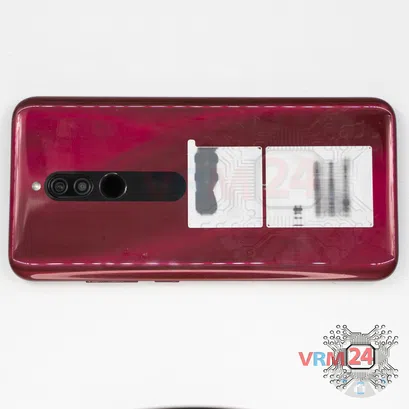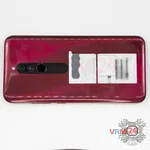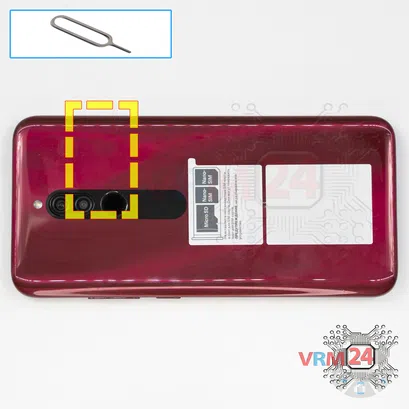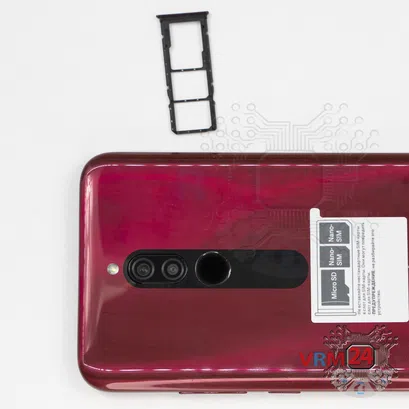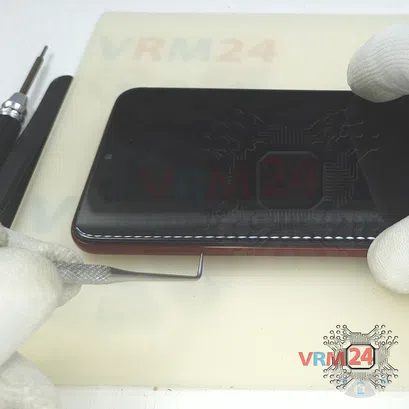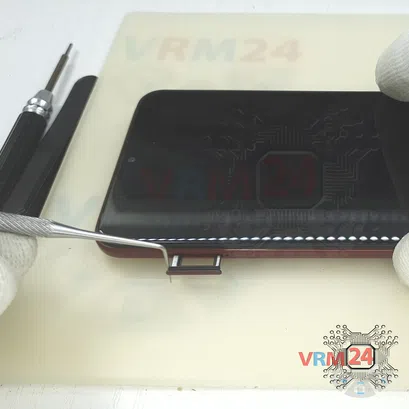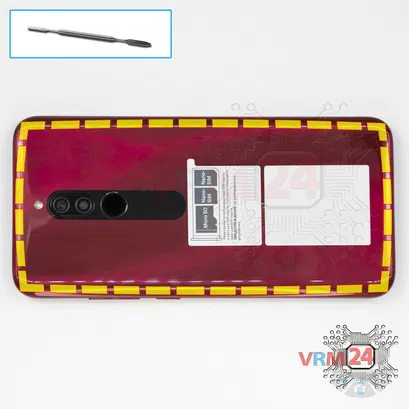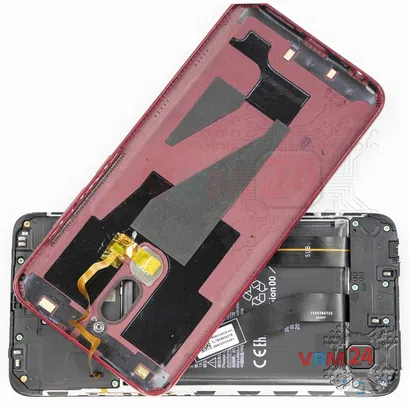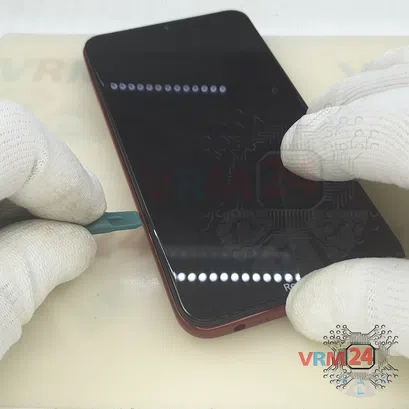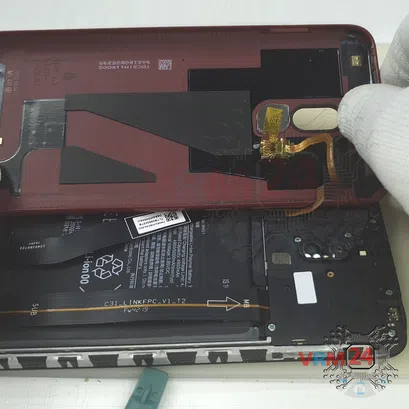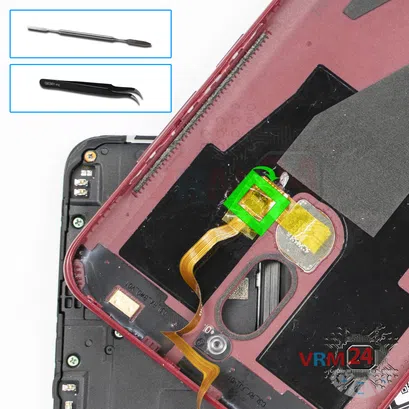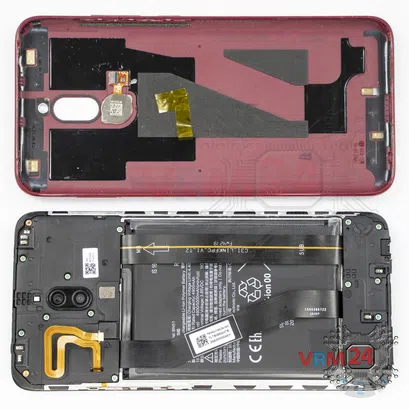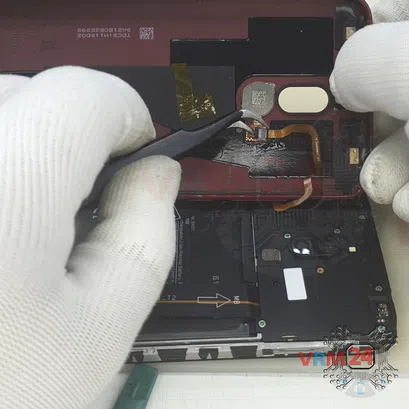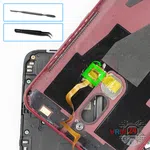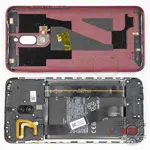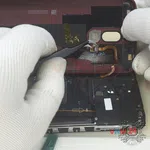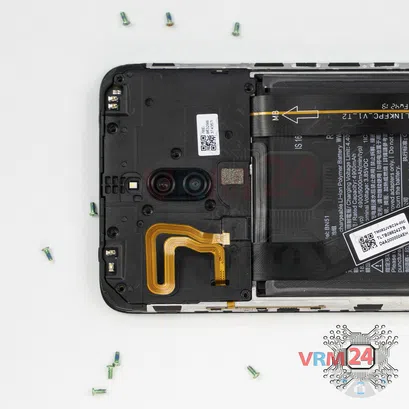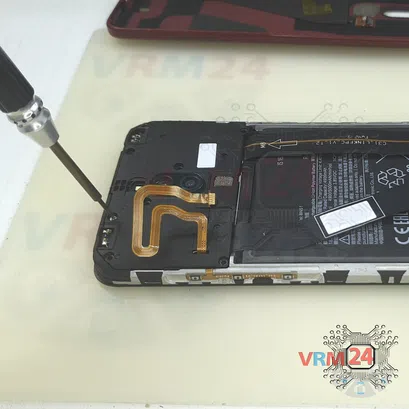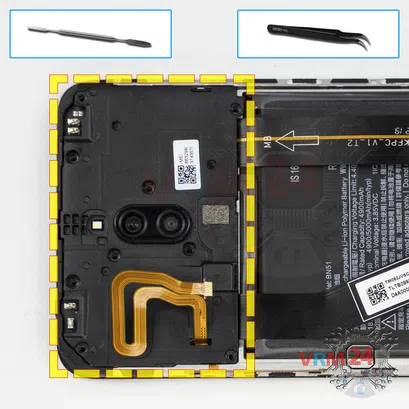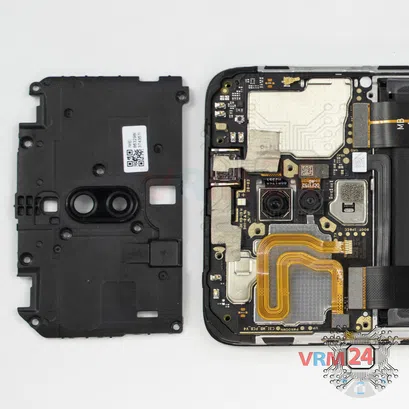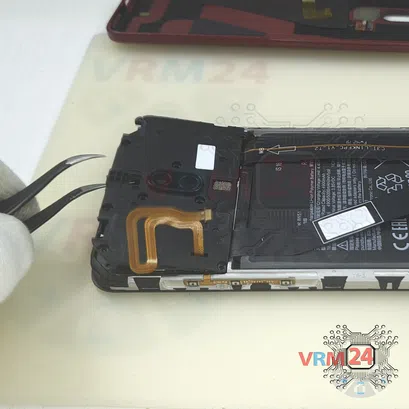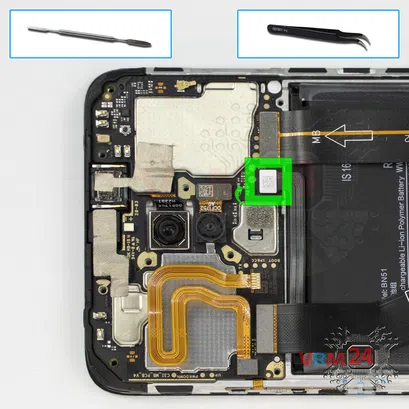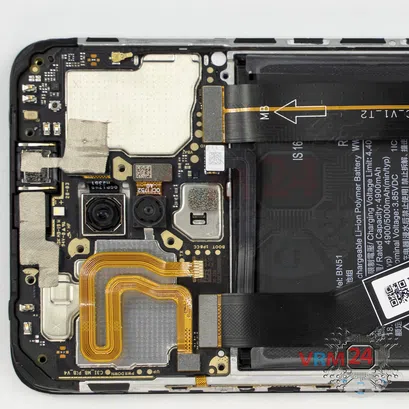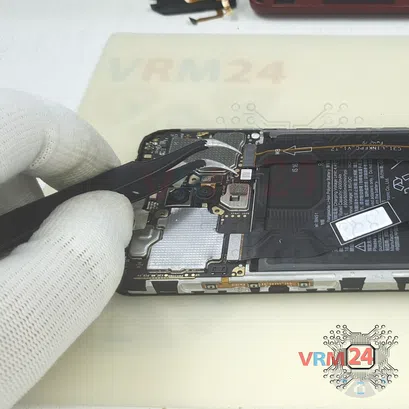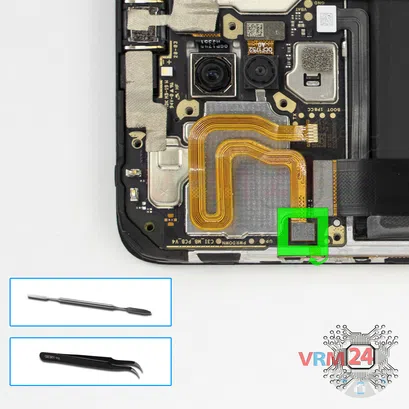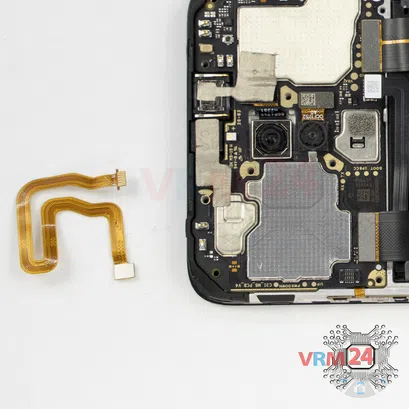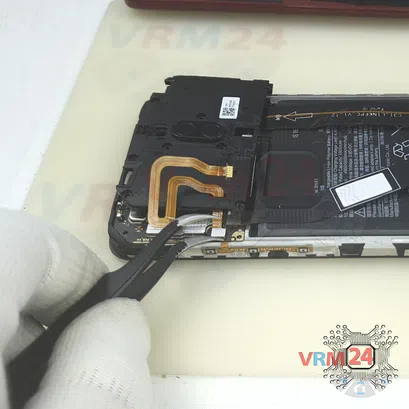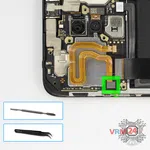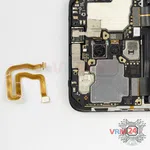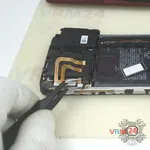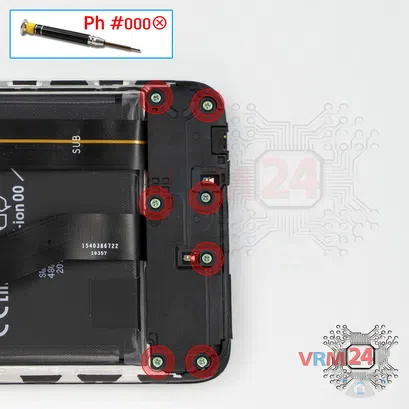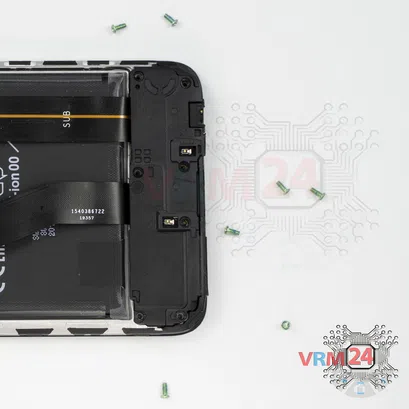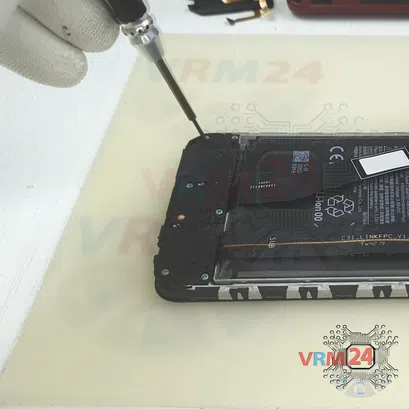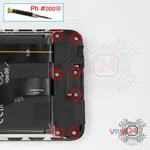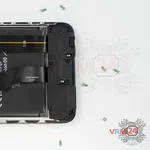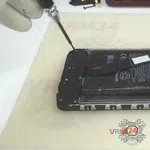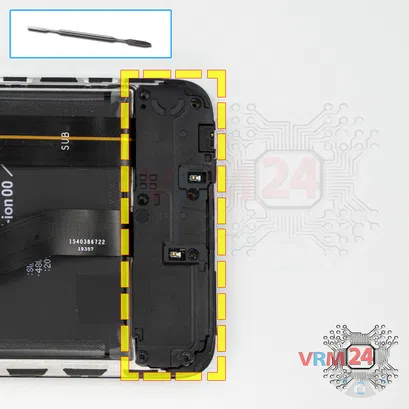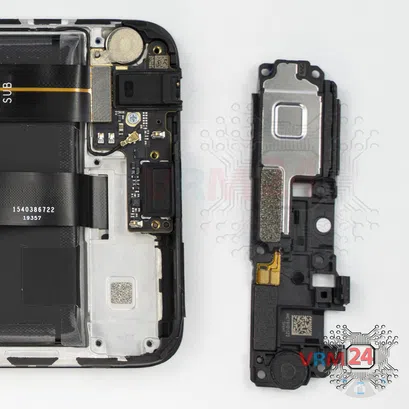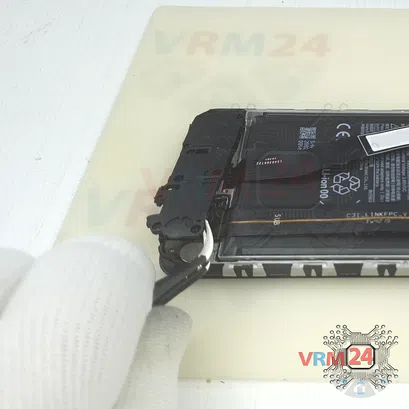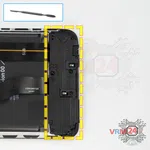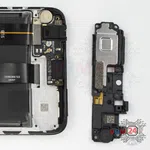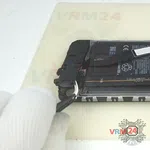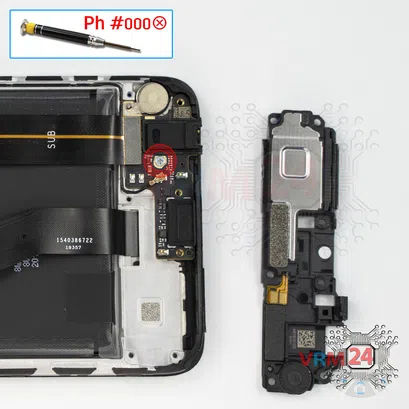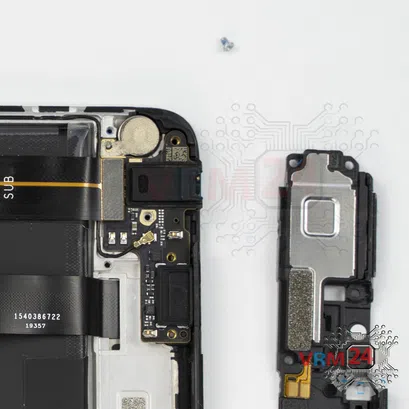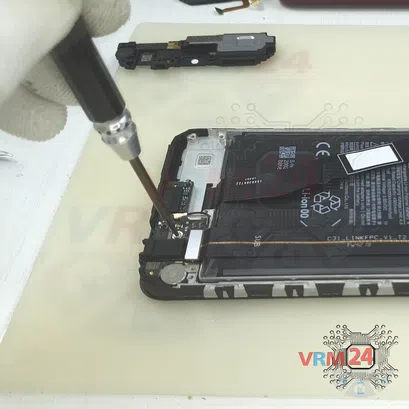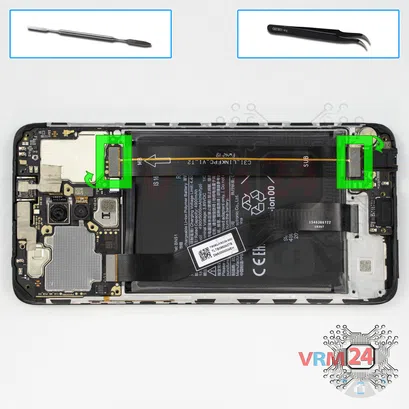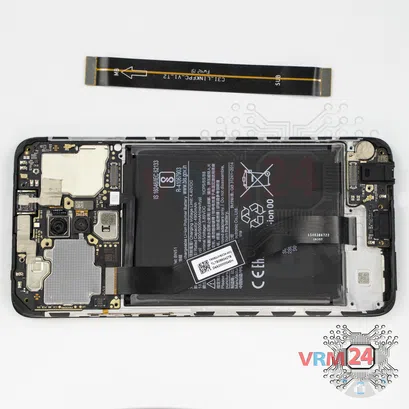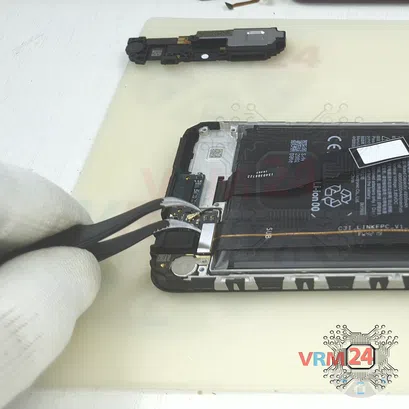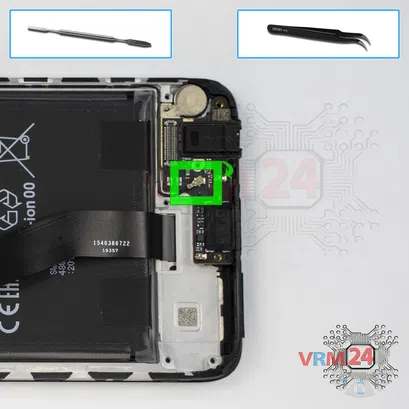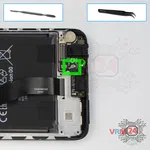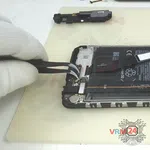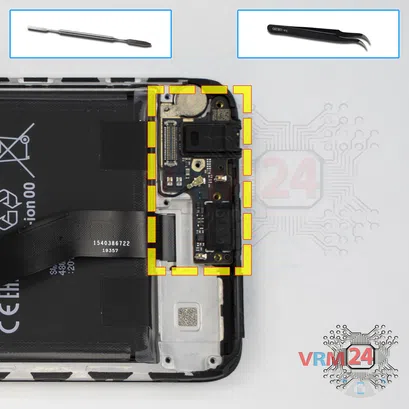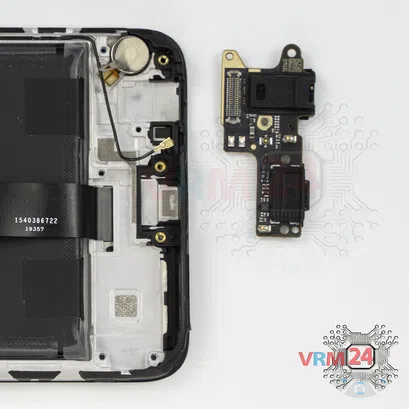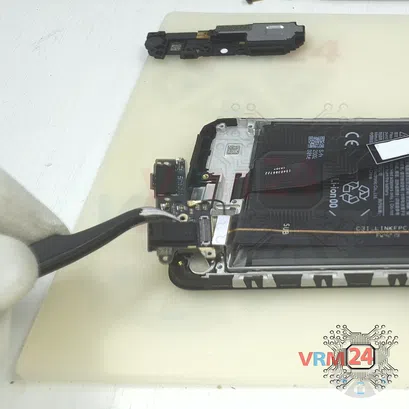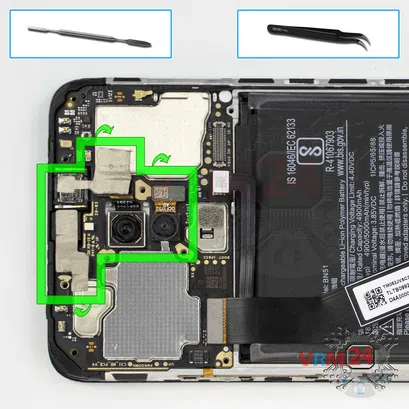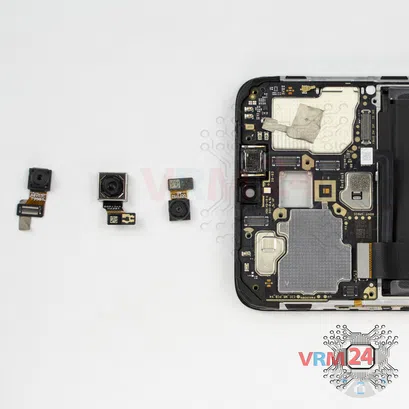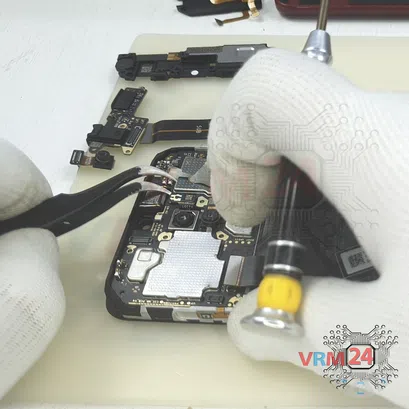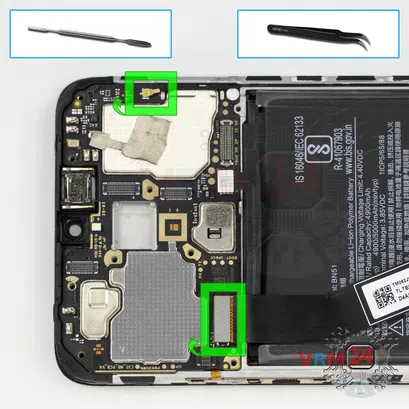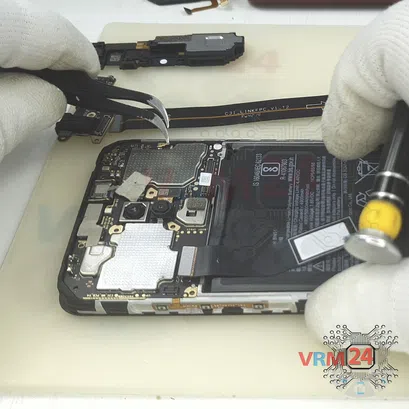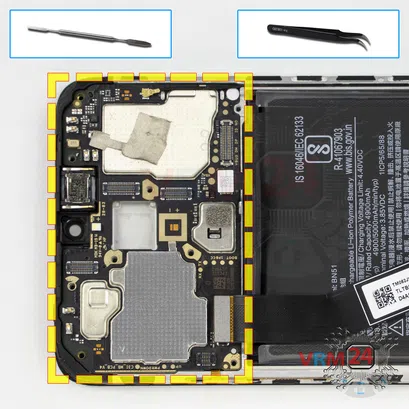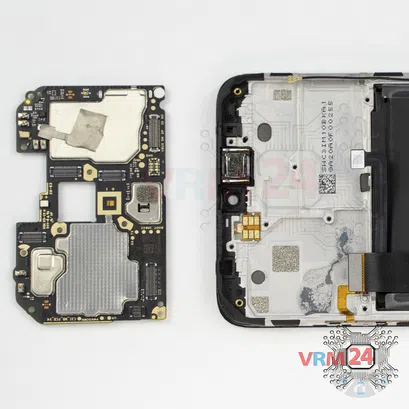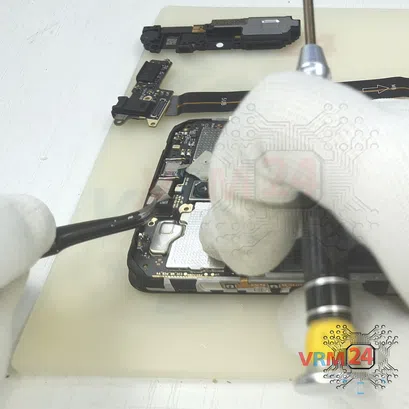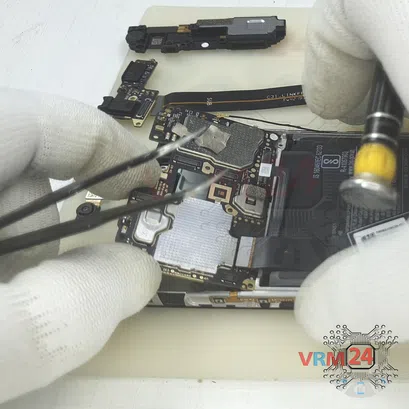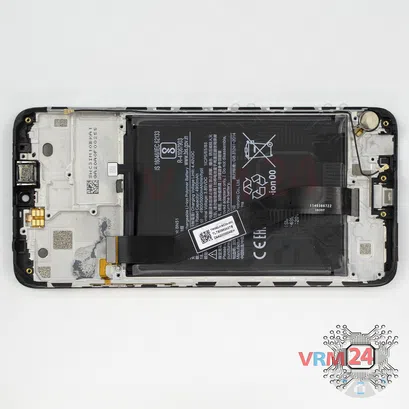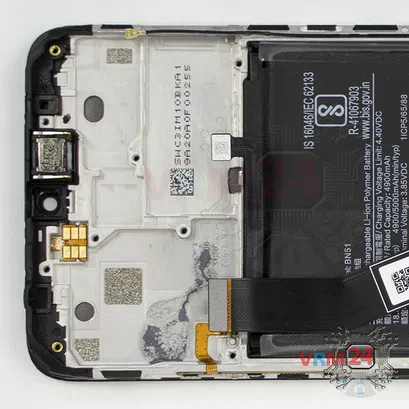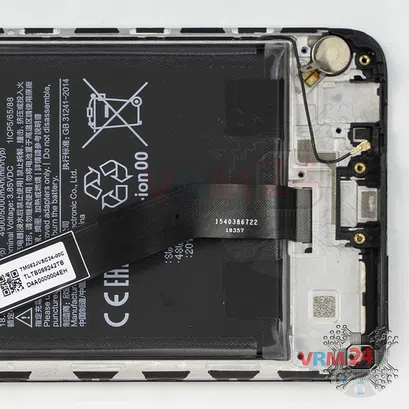⚠️ Before disassembling, do not forget to turn your phone off.
Easy
9 min
Recommended tools



Disassembly/Repair of the mobile device Xiaomi Redmi 8 (Xiaomi Redmi 8 M1908C3IG) with each step description and the required set of tools.

Vadim Popoff
Author / content specialist
Author / Content specialist with 10+ years of experience

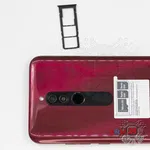
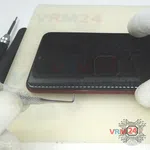
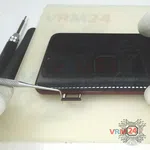
Step 2. Remove the tray
Use the Key tool (aka Needle) or Paperclip. Push the tip all the way into the hole until the tray ejects, and then pull the tray out.
⚠️ Pay attention! The tool must be inserted into a hole on the edge of the phone's housing. Do not press too hard. It may break the tray eject mechanism.
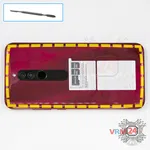
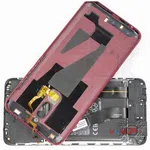
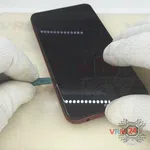
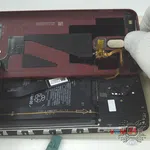
Step 3. Open the back cover
Using a spudger or a plastic pick, carefully, around the edge, detach the back cover clips, and remove it. Do not insert the tool deeply or bend it. Otherwise, the housing may be tampered with or damaged.
⚠️ Be careful when opening the cover from the volume and power buttons side. Thin cable and fragile buttons are straightforward to damage.
⚠️ Look in advance in the picture for the cables’ location for inter-board, touchscreen, display, buttons (if any) under the cover to not damage them accidentally.
⚠️ Pay attention to the fingerprint sensor cable glued to the back cover from the inside. (if there is one and it is glued to the cover)
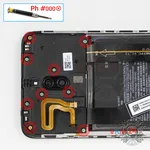
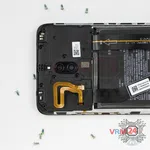
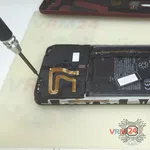
Step 5. Unscrew the screws
Using a screwdriver (Phillips 1.5 mm PH000), unscrew the nine screws.
ℹ️️ Be sure to note the location of the screws before disassembling. When assembling the device, screwing the screw in the wrong place may damage the device or its parts. To avoid damage, the removed screws and individual pieces (as gaskets or brackets) must be laid out in the appropriate order, or the screws and their holes in the phone must be marked with colored markers.
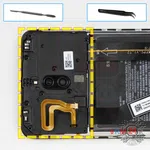
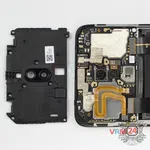
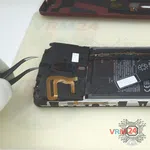
Step 6. Open the cover
Remove the cover with antennas that protect the printed circuit board (PCB). Try to lift the covers by the edges and not push anything between them to not accidentally touch or short-circuit anything on the PCB.
ℹ️️ On the upper cover, you can see the metalized coating on the plastic in the form of tracks and contact pads. These are Wi-Fi, Bluetooth, and GPS antennas.
⚠️ It is crucial while reassembling, checking the spring contacts on the board, and the contact pads on the cover match and touch. Otherwise, signal loss or signal may be quite weak.
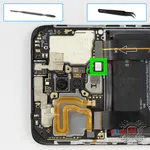
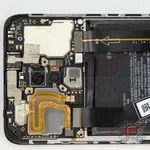
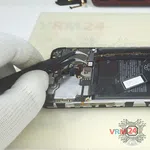
Step 7. Disconnect the battery connector
Disconnect the battery connector as soon as possible.
ℹ️️ The Xiaomi Redmi 8 model has a battery BN51 with 5000 mAh capacity (aka rechargeable battery).
⚠️ It is highly recommended to disconnect the connector to avoid possible short circuits during disassembly. Also, try not to use a metal tool to disconnect the rechargeable battery connector or do it carefully.
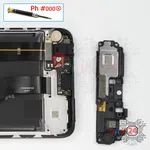
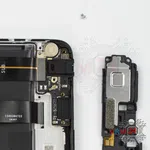
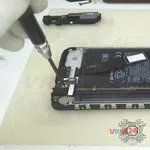
Step 11. Unscrew one screw
Using a screwdriver (Phillips 1.5 mm PH000), unscrew one screw securing the daughterboard (aka sub-board).
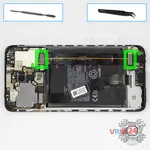
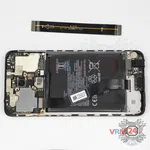
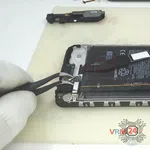
Step 12. Remove the inter-board cable
Carefully, preferably from the edge, disconnect the connectors and remove the inter-board cable connecting the mainboard to the daughterboard (also known as the sub-board).
⚠️ Be careful when removing the cables from the connectors, the cables are pretty thin, and it is easy enough to break them or damage the contact tracks inside.
ℹ️️ An arrow on the FFC cable (flexible flat cable) indicates its correct position.
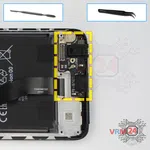
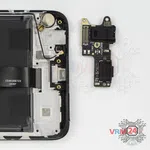
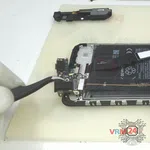
Step 14. Remove the sub-board
Remove the sub-board. It is glued to the frame with metalized tape, so to facilitate the process, the board can be heated a bit.
ℹ️️ The board contains a charging port (Micro USB), microphone, headphone socket, spring contacts for the speaker, and an antenna unit.
⚠️ It is not necessary to insert the tool under the board when removing the sub-board. Internal components could be damaged.
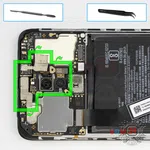
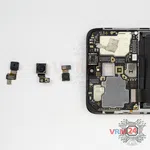
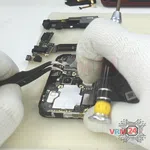
Step 15. Remove the cameras
Disconnect the connectors and remove the front-facing camera and two rear cameras.
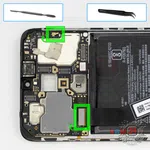
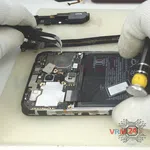
Step 16. Disconnect the connectors
Pry up the connectors of the inter-board cable and coaxial cable.
⚠️ Be careful when removing the cables from the connectors, the cables are pretty thin, and it is easy enough to break them or damage the contact tracks inside.
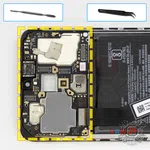
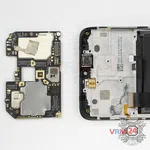
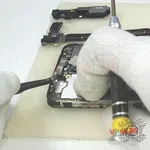
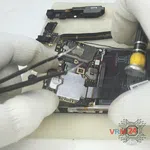
Step 17. Remove the motherboard
Carefully remove the printed circuit board. There is no need to use a lever or try to reach the board by force. Make sure that nothing is getting in the way or holding the board.
⚠️ Do not bend the circuit board when removing it or push tools under it. Unbeknownst to yourself, you can damage components or cables from the inside.
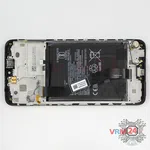
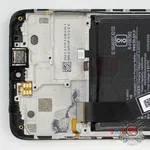
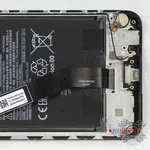
Step 18. In the display frame remained
ℹ️️ In the display frame remained: the earpiece speaker, battery, coaxial cable, and vibration motor.
Detailed disassembly instructions of Xiaomi Redmi 8 in the video, made by our mobile repair & service center:
If you have a question, ask us, and we will try to answer in as much detail as possible. If this article was helpful for you, please rate it.

Evgenii Kuzmin
Senior maintenance service and repair engineer
Back to the list

